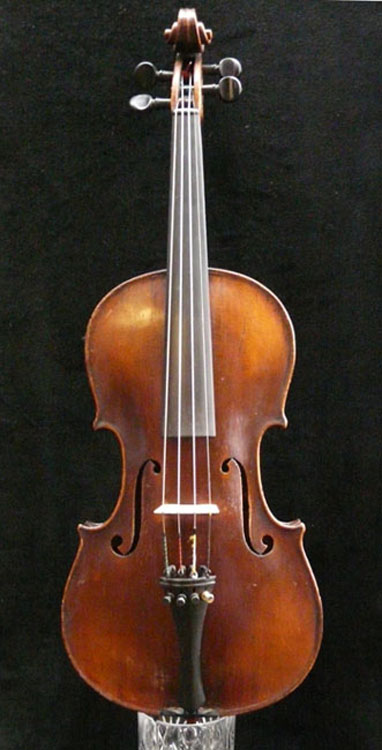
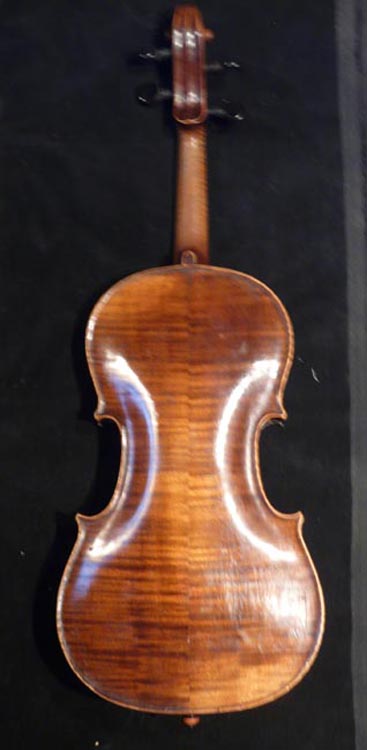
Friederich August Glass II (ca. 1850) |
This is a fine, 'bench made' piece from Friedrich August Glass II, made between 1830 and 1860 and can be authenticated as by that maker. Although undated, it bears the bona fide hand inked label of Friedrich August Glass II of that period. His father (same name) is known to have worked in Klingenthal as early as 1790 according to Henley. This is one of the finer examples of German violin craft, on par, if not quite superior to the works of Heberlein and Roth as well as predating them. Below is Henley's take on his son, who made this violin based on the 'Grande' pattern of Stradivari. Structurally, it is in fine condition due to major overhaulings in 1936 and 2007. |
 |
 |
The grain rings of the spruce top are very tight, and continuous across the breath of the table.
The varnish is original and in good condition. The sublte red-brown color is entrained in a light varnish coat over a golden ground that has evolved into a soft, aged patina. Major repairs have been made at least twice in its lifetime with no need for any further work. This particular model is a formula copy of a 1736 Strad known as the "Muntz"-- right down to the slightly ascending maple chevrons of the back plate. |
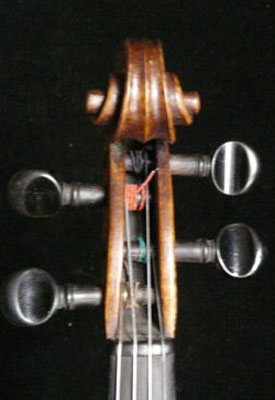 |
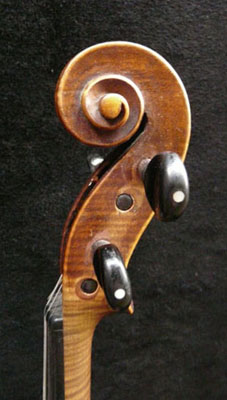 |
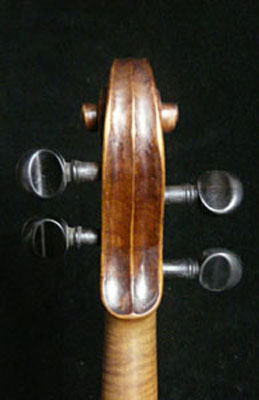 |
A well carved scroll with attention to detail. Note the wide spread of the volute from eye to eye as seen from the front. |
The peg box cheeks were bushed and refitted with new pegs at some point. |
 |
The neck is solidly mounted at the right angle. The strings clear at 3/16" to 1/8" off the end of the finger board and the new Aubert bridge is loaded with 'nutmeg'. |
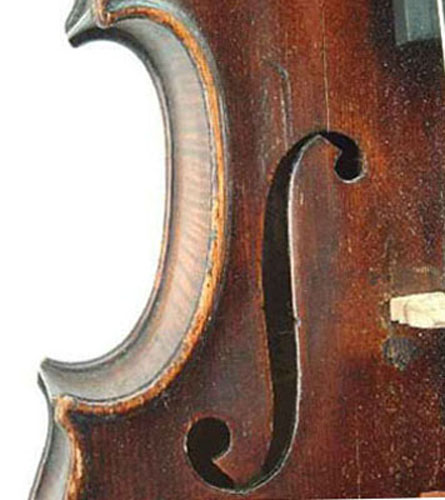 |
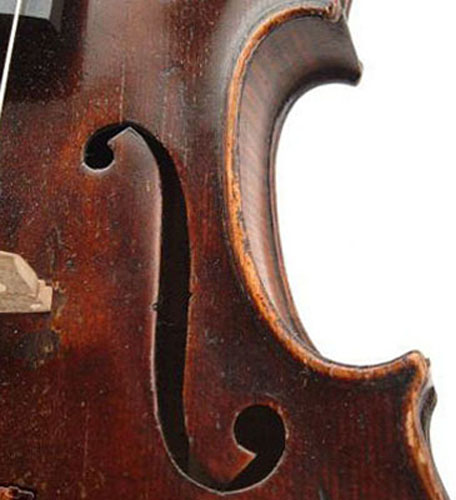 |
The edges and corners are roughly chaffed but all intact. The varnish is original and untouched. The 'f' holes are rather thin and elegant. There have been some repaired cracks on the table but no repairs to the soundpost area and none to the back. All the fittings are new. It has all four corner blocks and willow linings. |
Please note - it does NOT have the initials FAG stamped on the back under the heel -- a sign of commercial output by studio workers and descendents of later years and then eventually mass production for export by imitators capitalizing on his reputation. The high, elliptical shape of the button is an earmark of Germanic work and attributed to the influence of Stainer, whos pattern he sometimes copied. |
Above, is the label of the F. A. Glass family prior to their expansion into the divisions of laborcommonly known as "manufacturing", i.e.--mass producing "trade " violins for export.It has no Glass brand on the back or F.A.G. inside the corpus. It is a pre-commercial piece. Right below it is the repair label of H.M. Parkerson from 1936. |
 |
Above, the bass bar installed by Parkerson in 1936. |
 |
There are four old table cleats, and two from 2007 -- none approaching the soundpost area. |
 |
Above, a look at the corner blocks and willow lining |
Above, a look at the ribbing and edgework |
On the right - the last signed repair in 2007 by 'Doc' Rudolph, of Nashua, NH |
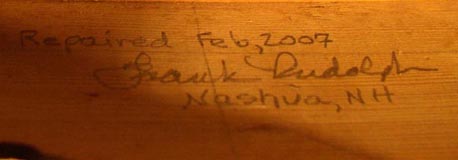 |
The heel is well mounted and all the seems are right and tight. |
Closer shots of the table and back. |
SOUND & PLAYABILITY |
MEASURMENTS |
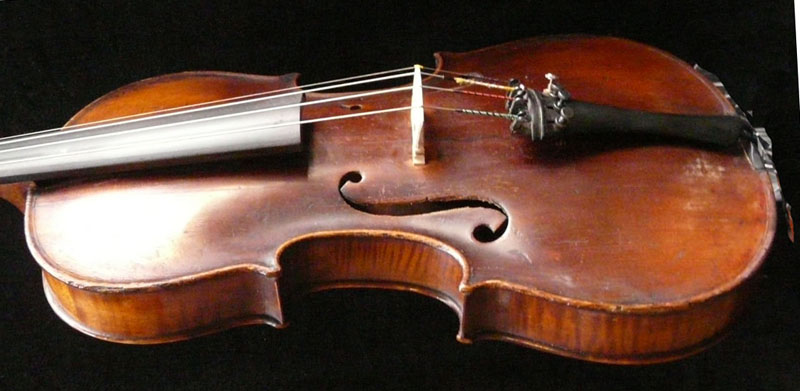 |
return to the gallery page by clicking the link below http://stnichsigns.com/Makers'Orphans.html |